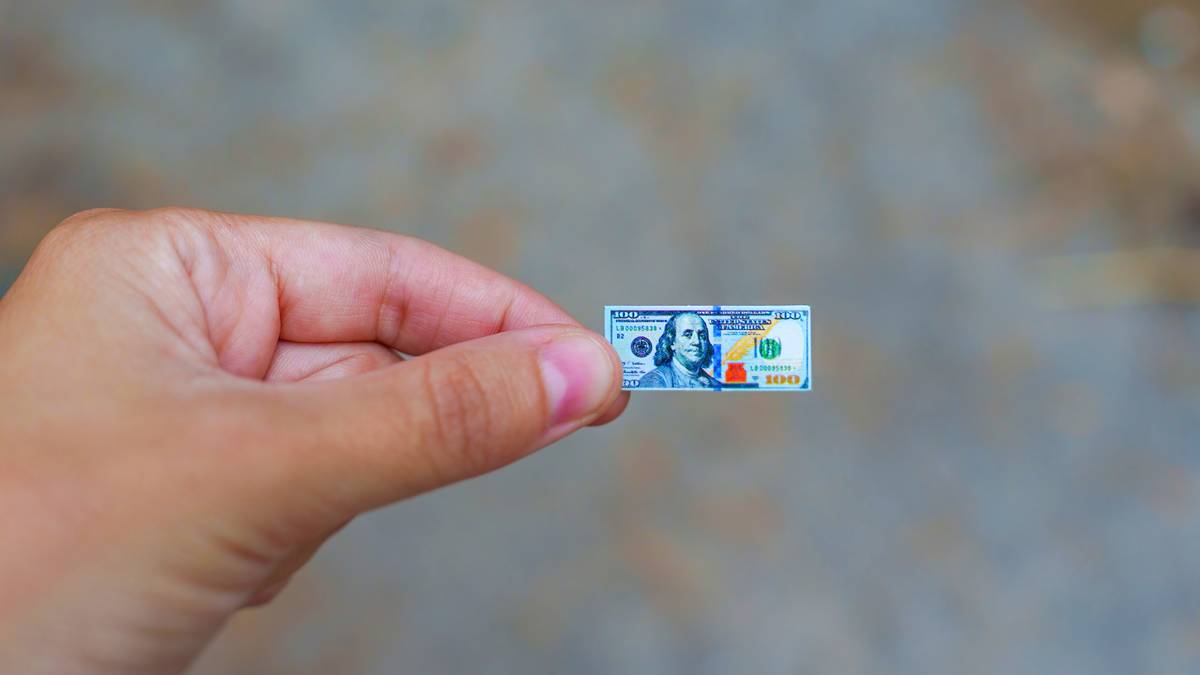Health Check: In shunning the IPO hot money, Tetratherix says ‘less is more’

A with the great miniaturist artists, Tetratherix says 'less is more' is the best approach to fundraising. Pic: Getty Images
- Wound management house Tetratherix takes a haircut on its pending IPO, so the register has stayers rather than short-term players
- The FDA has approved CSL’s next-gen treatment for hereditary angioedema
- Nothing fishy as zebrafish don The Big Freeze beanies
Wound management house Tetratherix is on track to list on Monday week, June 30, having shaved its initial public offer to $25 million from the targeted $35 million.
Tetratherix’s EOFY special will be the first biotech IPO since nerve regeneration play ReNerve (ASX:RNV) listed in November last year and is a key bellwether of investor appetite for such offerings.
“We are all done,” says CEO Will Knox.
“The company had bids up to $35 but there was some fast money in there.
“We weren’t confident of them being a long-term investor. So, to protect current shareholders and investors we reduced it a bit.”
Tetratherix is based on a ‘biostealth fluid matrix’, which has applications in tissue healing, bone regeneration and surgical spacing.
Supplied in ready-to-use syringes, the polymer is injected into the relevant anatomy and sets to a “chewing-gum” consistency at body temperature.
This means the material can be easily moulded to suit the application, and breaks down into water and carbon dioxide when the job is done.
Pending expected US Food and Drug Administration (FDA) approval, the company hopes to bring its first products to market in the first half of 2026.
These are for dental applications and bone regeneration and orthopaedic uses.
In the pipeline
The company also has tools in the pipeline for scar prevention during surgery and a prostate surgery ‘spacer’ to protect surrounding tissue during radiation therapy.
Knox said the company had been “very deliberate” about the timing of the IPO, given it has transitioned from a research-focused business to a fully-fledged commercial entity.
Tetratherix has earmarked part of the funds to a new manufacturing facility in Sydney’s Alexandria, with ten times the capacity of its current digs around the corner.
“We are setting ourselves up to be an Australian leader in advanced material manufacturing in the biological and medical device space,” Knox says.
CSL wins key US drug approval
Out-of-sorts CSL (ASX:CSL) has notched up a win, with the FDA approving its prophylactic hereditary angioedema treatment called Andembry (garadacimab).
Affecting about one in 50,000 people, hereditary angioedema (HAE) is a rare genetic disorder. It results in unpredictable swelling on various parts of the body including the airway (which can be life threatening).
CSL describes Andembry as the “first and only treatment” providing sustained protection from the disorder. It works by inhibiting Factor XII (FXIIa), a key driver of HAE attacks.
Administered via an autoinjector, Andembry is the only treatment to offer once-monthly dosing via a pre-filled pen.
The treatment “complements” CSL’s Behring arm’s existing portfolio of the (subcutaneous) Haegarda and the intravenous Berinert.
Combined, these therapies chalked up US$374 million of sales in the first half.
CSL shares have lost about 17% over the past year and investors were unmoved by the news in early trading today.
A nice earner
In an earlier note, broker Wilsons estimated Andembry could generate peak annual sales of US$600 million as well as post-tax earnings of US$400 million.
Put another way, the firm believes the drug accounts for 7% of CSL’s valuation and will add 180 basis points to Behring’s gross profit margins.
Wilsons says Andembry stacks up against rival product Takhzyro in terms of superior disease control, convenient dosing and “pristine “ safety.
“Attack-free prophylaxis is a powerful influence on prescribing and the main reason we expect garadacimab to become the new standard of care.”
Of course, Andembry could cannibalise Haegarda sales to a degree.
Regulators already have approved Andembry in Europe, the UK, Japan, Switzerland, the United Arab Emirates and Australia.
The company will launch Andembry in the US “immediately”, via third-party specialty pharmacies.
CSL shares have been buffeted by the uncertainties over US tariffs and drug pricing, as well as softness in its Seqirus flu vaccine division.
Neurizon taps the aquarium for drug inspiration
Neurizon Therapeutics (ASX:NUZ) announcement this week pertaining to its pre-clinical study of Huntington’s disease raises a crucial question: what is the relevance of a zebrafish?
The answer is a zebrafish is a freshwater species popular in aquariums, because the piscatorial samples have traits conducive to human biological research.
According to sometimes reliable sources – ok, Wikipedia – the zebrafish genome is well developed. It is also “well-understood, easily observable and with testable developmental behaviours.”
Coming back to Neurizon, the company said its lead drug candidate NUZ-001 (monepantel) lead to “significant neuroprotective effects in a zebrafish model of Huntington’s disease”.
In essence, NUZ-001 might prevent early neuro-degenerative damage.
Neurizon’s key focus is on amyotrophic lateral sclerosis, ALS, a form of motor neurone disease.
Former AFL footballer and coach Neale Daniher, the force behind the wildly popular Big Freeze campaign and charity FightMND, suffers ALS.
In December last year, the company said a nine-patient study showed that after nine months, NUZ-001 reduced the risk of death by 78%.
US researchers win a court reprieve
In the latest medical news from Trumpland, a federal judge has deemed that some of the grant terminations foisted on the National Institutes of Health (NIH) were “void and illegal”.
The NIH is the world’s biggest funder of medical research.
The US District Court decision related to two suits filed over the termination of hundreds of grants, which rattled life science researchers.
The presiding judge ruled the cuts were invalid because they discriminated against activities including women’s health and LGBTQ+ health research.
ASX biotechs are likely to be indirectly affected by the cuts – reportedly totalling US$3.8 billion – as their university and hospital partners are deprived of funds.
Given the Trump administration doesn’t take well to adverse judicial decisions, biotech watchers will wait and see whether the court order is merely a temporary reprieve.
Stockhead, we tell it as it is. While Neurizon and Renerve are Stockhead advertisers, they did not sponsor this article.

UNLOCK INSIGHTS
Discover the untold stories of emerging ASX stocks.
Daily news and expert analysis, it's free to subscribe.
By proceeding, you confirm you understand that we handle personal information in accordance with our Privacy Policy.








